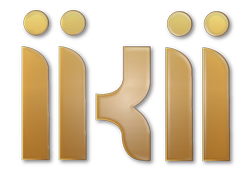Research Article
Implementation of First-Year Aesthetic Education Program in University
More Detail
1 Center for General Education, Chung Yuan Christian University, Taoyuan 320314, Taiwan2 Master Program in Music Industry, Chung Yuan Christian University, Taoyuan 320314, Taiwan3 Department of Special Education, Chung Yuan Christian University, Taoyuan 320314, Taiwan* Corresponding Author
International Journal of Social Sciences and Artistic Innovations, 4(2), June 2024, 35-44, https://doi.org/10.35745/ijssai2024v04.02.0004
Published: 12 June 2024
OPEN ACCESS 675 Views 290 Downloads
ABSTRACT
We analyzed the first-year program in college aesthetic education that is promoted by the Ministry of Education in Taiwan. Students need to take 11 general courses related to aesthetics in the four majors in art. Using a Student Aesthetic Literacy Questionnaire, we analyzed the aesthetic literacy of 608 students using the Levene test, the Shapiro-Wilk test, the Kruskal-Wallis test, and the Dunn test. The results were analyzed to understand whether the students had different aesthetic literacy and performances by gender, grade, and college. At the same time, the correlation between the number of aesthetic-related courses taken, the number of times for aesthetic-related activities, and their self-aesthetic literacy was investigated. Female students were better at Visual Art Expression and Appreciation Skills than male students. To continue to promote aesthetic education programs, it is demanded to offer more diversified related courses and activities than at present. It is also necessary to conduct more targeted questionnaire surveys for future development.
CITATION (APA)
Chien, S.-K., Chen, C.-C., & Chou, Y.-C. (2024). Implementation of First-Year Aesthetic Education Program in University. International Journal of Social Sciences and Artistic Innovations, 4(2), 35-44. https://doi.org/10.35745/ijssai2024v04.02.0004
REFERENCES
- Chamorro-Premuzic, T., & Furnham, A. (2005). Art judgement: A measure related to both personality and intelligence? Imagination, Cognition and Personality, 24, 3–24. http://dx.doi.org/10.2190/U4LW-TH9X-80M3-NJ54
- Chatterjee, A., Widick, P., Sternschein, R., Smith, W. B., II, & Brom- berger, B. (2010). The assessment of art attributes. Empirical Studies of the Arts, 28, 207–222. http://dx.doi.org/10.2190/EM.28.2.f
- Huang, C. (2012). The Influence of Art Education on Character. Journal of Applied Ethics Teaching and Research, 7(1), 103–113. https://doi.org/10.6794/JAETR.201201.0103
- Hung, Y. (2005). Transformative Teaching through Aesthetic Experience. Association for Curriculum and Instruction, 8(2), 25–40. https://doi.org/10.6384/CIQ.200504.0025
- Kárpáti, A., & Abonyi, V. (1987). Interdisciplinarity in Aesthetic Education: Ideas, Results, Prospects. Journal of Aesthetic Education, 21(3), 97–107. https://doi.org/10.2307/3332874
- Wu, K. (2017). A Study of Scale Construction and Situation of Aesthetic Literacy. Psychological Testing, 64(2), 131–154. https://www.airitilibrary.com/Article/Detail?DocID=16094905-201706-201709120013-201709120013-131-154
- Laurie, R.; Nonoyama-Tarumi, Y.; Mckeown, R.; Hopkins, C. (2016). Contributions of Education for Sustainable Development (ESD) to Quality Education: A Synthesis of Research. J. Educ. Sustain. Dev., 10, 226–242.
- Leder, H., Gerger, G., Brieber, D., & Schwarz, N. (2014). What makes an art expert? Emotion and evaluation in art appreciation. Cognition and Emotion, 28, 1137–1147. http://dx.doi.org/10.1080/02699931.2013.870132
- Specker, E., Forster, M., Brinkmann, H., Boddy, J., Pelowski, M., Rosenberg, R., & Leder, H. (2020). The Vienna Art Interest and Art Knowledge Questionnaire (VAIAK): A unified and validated measure of art interest and art knowledge. Psychology of Aesthetics, Creativity, and the Arts, 14(2), 172–185. https://doi.org/10.1037/aca0000205
- Tao Y. & Tao Y. (2014). Integrating Aesthetic Education in Quality Education: A Bibliometric Analysis of Sustainable Development Perspectives. Sustainability, 16(2), 855. https://doi.org/10.3390/su16020855
- United Nations. Arts Education for a sustainabel future. Post on November 10, 2020. Available online: https://sdgs.un.org/partnerships/arts-education-sustainabel-future (accessed on January 23, 2024)
- Weaver, Adam. (2009). Tourism and aesthetic design: Enchantment, style and commerce. Journal of Tourism and Cultural Change, 7, 179–189. https://doi.org/10.1080/14766820903259493
- Yang, J. (2022). Chinese contemporary art teachers’ professional development in the 20th and 21st centuries within the multicultural framework. Herit. Sci., 10, 56.

 OPEN ACCESS
OPEN ACCESS

 The articles published in this journal are licensed under the CC-BY Creative Commons Attribution International License.
The articles published in this journal are licensed under the CC-BY Creative Commons Attribution International License.